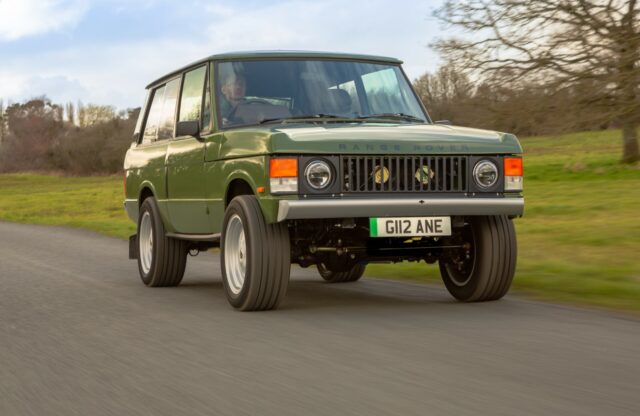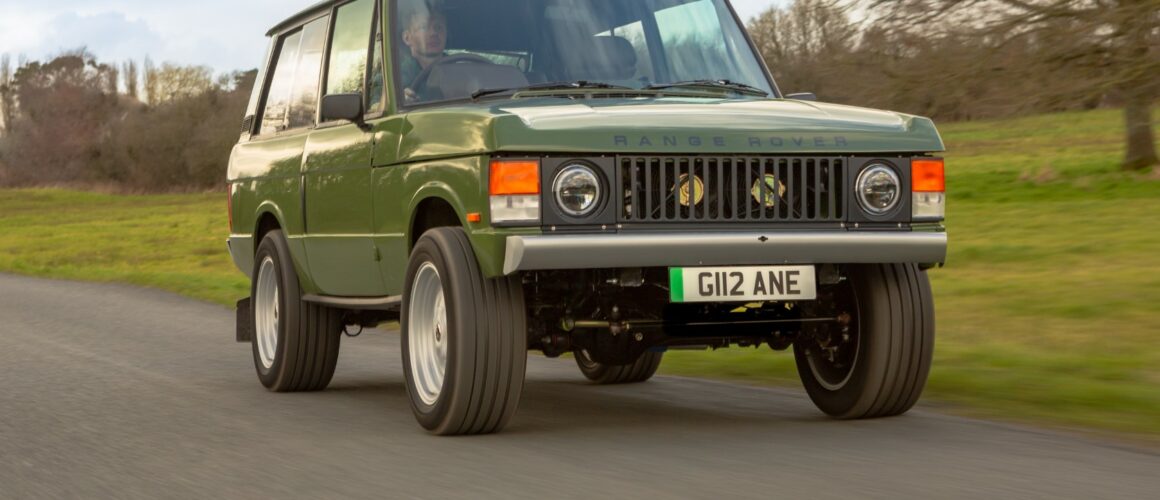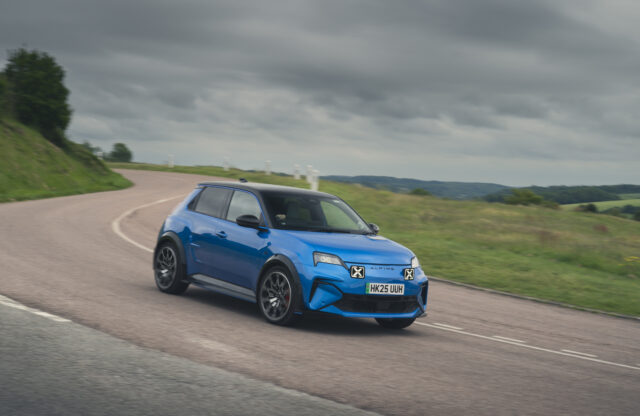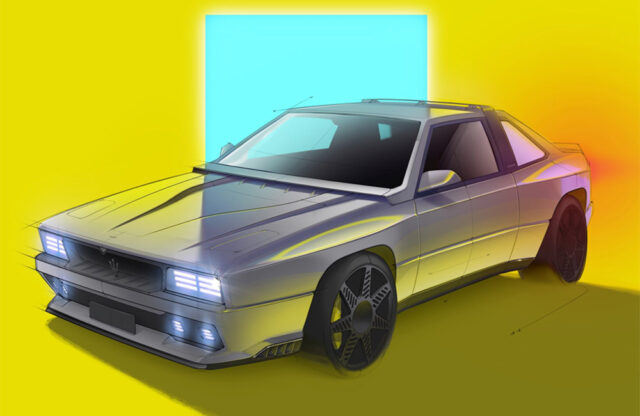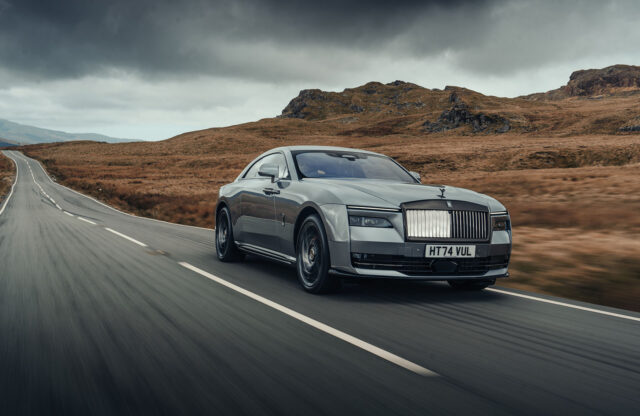WORDS: SIMON DE BURTON | PHOTOS: INVERTED EV
About 20 years ago I was waiting at a junction on London’s famous Portobello Road when, out of nowhere, an eco-warrior flung himself across the bonnet of my old Range Rover and began telling me the error of my ways.
It was “capitalist idiots” like me, he said, who were “destroying the planet” by driving around in “expensive and pointless SUVs”.
I tried to explain that my 1984 Vogue in tastefully faded Nevada Gold had cost me £600 (they were cheap back then), and the fact that it had already given two decades of service made it thoroughly sustainable – along with the fact that it used so much petrol that I could rarely afford to drive it.
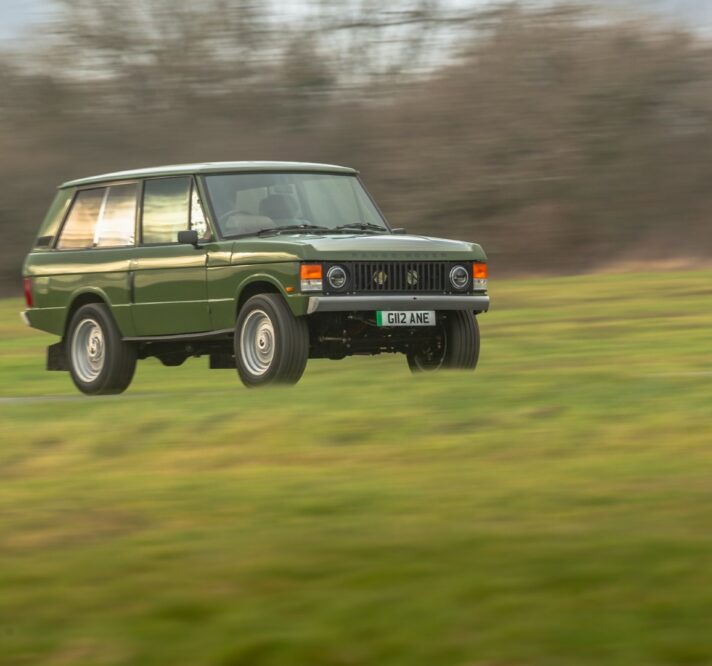
The ‘instant torque’ for which electric motors are famous made light work of even the least grippy sections
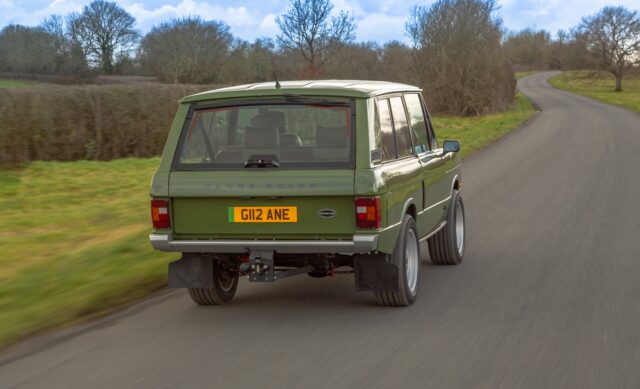
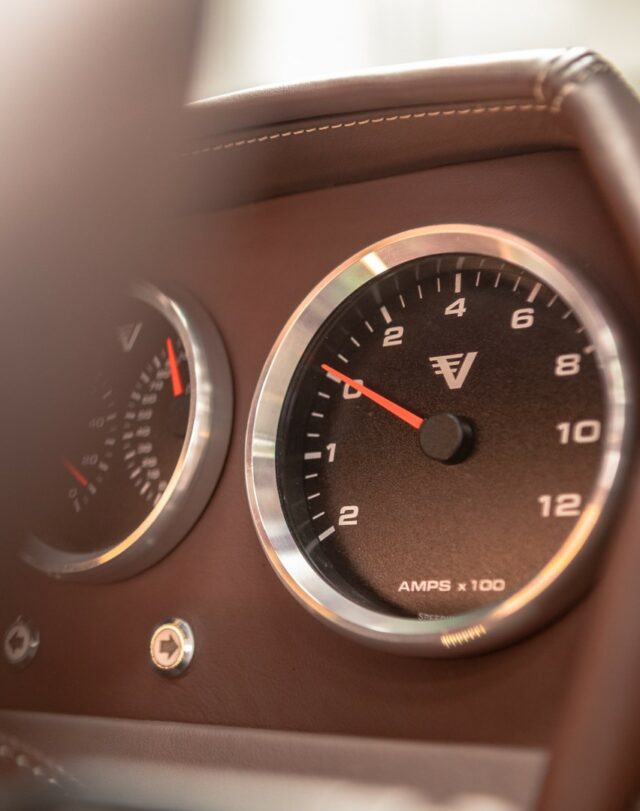
He didn’t listen, of course, but manfully bent a wiper arm and loped off while mouthing further aspersions over both shoulders.
So settling in behind the wheel of another ‘classic’ Range Rover recently, I found myself wishing my erstwhile critic would pop up again and set to with his ranting – simply so I could have the pleasure of riposting with the words: “You’ve got nothing on me this time, you tosser. It’s electric!”
And it was, too. The car I was driving was chassis number one from fledgling electric vehicle conversion specialist Inverted, which was founded in 2019 but only got started on its first build in 2021.
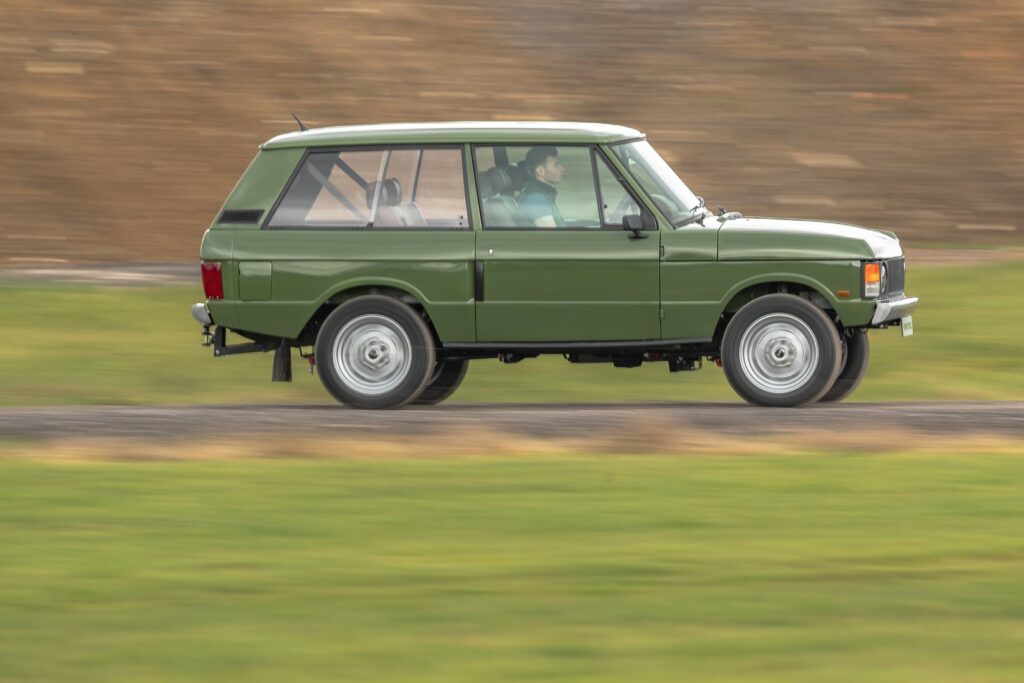
The man behind the business is Harry Millington, a 34-year-old property consultant working in south London who, with a bit of financial help from his goat-farmer father, has set about future-proofing the early Range Rovers he loves by chucking out the venerable V8 petrol engine and replacing it with an 80-kilowatt battery pack and a large electric motor, all from crashed Teslas (of which, Millington tells me, there is an abundance).
The result is the equivalent of 450bhp and a mighty 600Nm of torque – both of which would be a worrying prospect when paired with the softly sprung wallowings of a regular Range Rover. But as part of the ground-up rebuild included in every Inverted conversion, Millington considerably beefs up the suspension and also upgrades the brakes, making for a far less boat-like experience while retaining that famous Range Rover aplomb off-road.
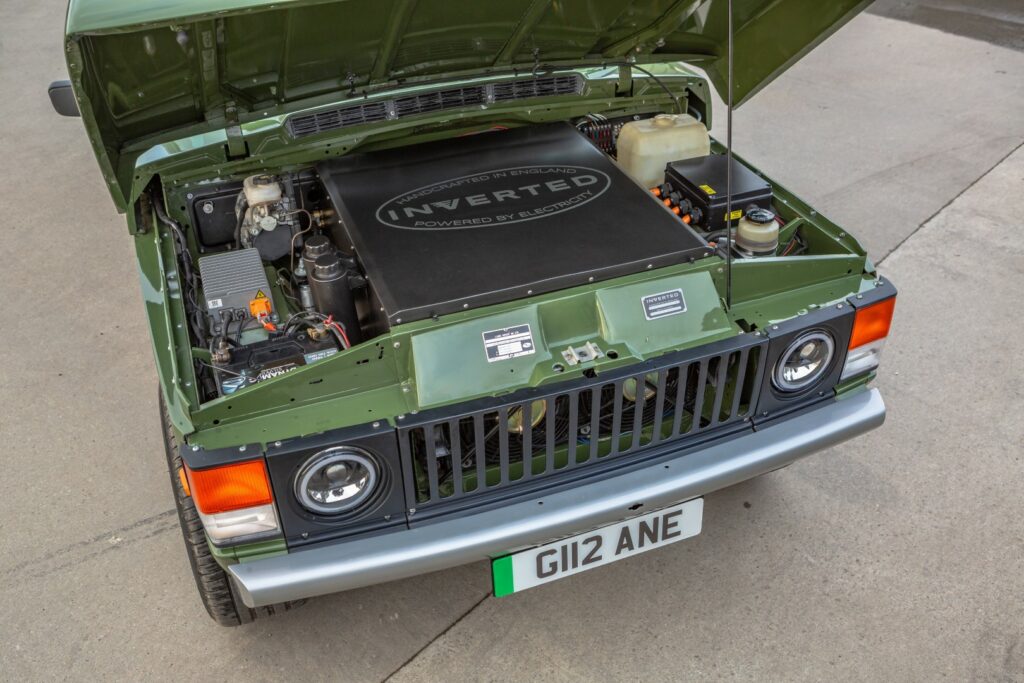
And I know that to be the case because, being thoroughly immature, the first thing I did after settling in to the stylish Mocha leather and tweed-trimmed driving seat was to suggest we head straight to my local Devon byway – an old, rock-strewn drover’s track that descends steeply into a valley and ends with a testing climb out a couple of miles later.
There was an initial wince from Millington, after which he quickly suggested we should “go for it” – although he did ask if we could cross the river via a bridge rather than using the wading option (instantly raising a question mark in relation to the true practicalities of an electric off-roader…). That aside, the Inverted tackled the track with impressive ease – and the ‘instant torque’ for which electric motors are famous made light work of even the least grippy sections.
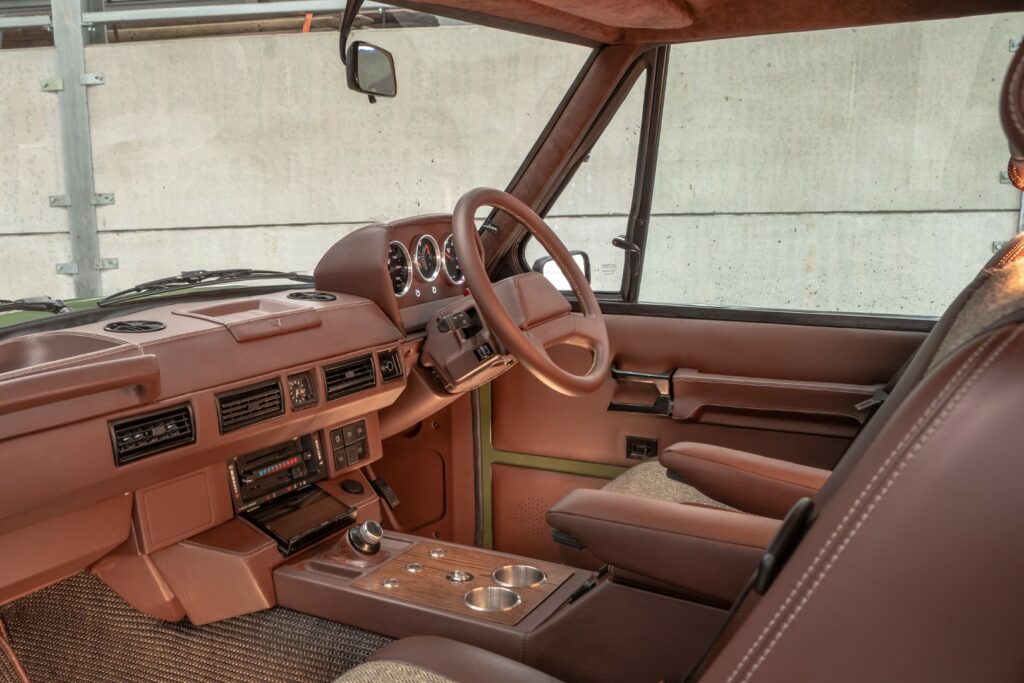
Despite our relatively silent progress (the car’s uninspiring whining noise struck me as being far more offensive than the sound of a well tuned V8) we still got the usual sanctimonious looks from walkers, but we felt on morally better ground than had we been internal-combustion powered.
Emerging onto a metalled road, the Inverted felt more planted and well made than most old Rangies, the driving experience being marred only by throttle and steering controls that felt almost as heavy as the ones in my 36-year-old ex-military Defender – although Millington says this first car is due to be upgraded with a lighter, more efficient power steering set-up that will be used on all future builds.
That heavy, long-travel throttle, meanwhile, means the Inverted seems to accelerate with less of the urgency we’ve come to expect from electric vehicles – although in Sport mode (as opposed to Eco or Off-road) the Inverted is said to be capable of hitting 60mph from standstill in just five seconds and topping out at 100mph.
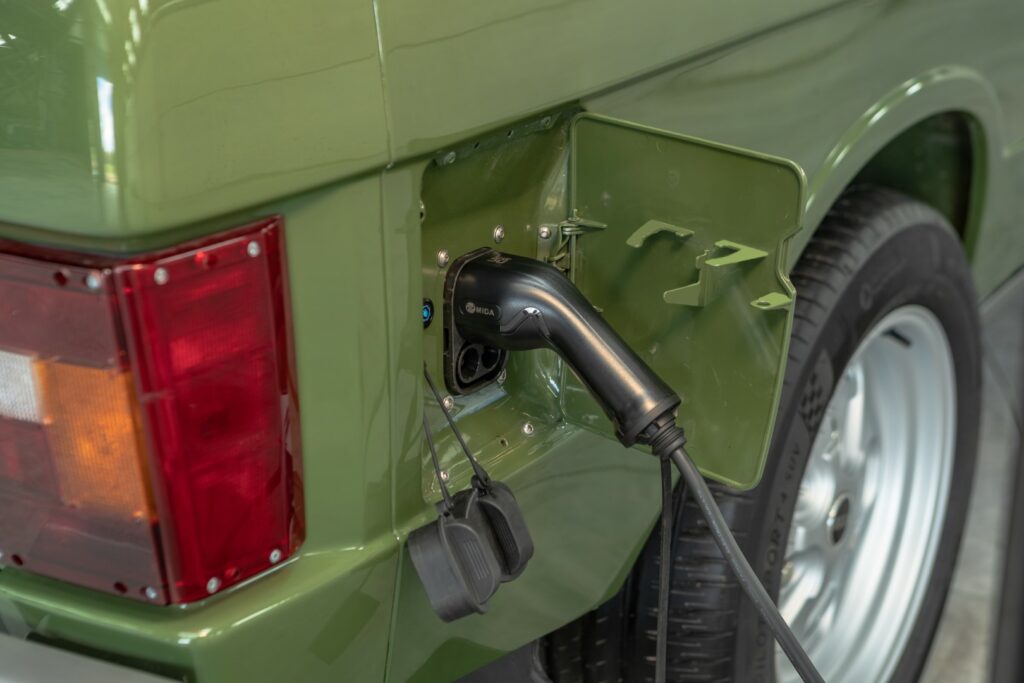
More importantly, it has a range of up to 200 miles and can be charged to 80 percent capacity in around half an hour using a 100kW charger – although the usual provisos mean you’ll probably be looking to top up after no more than 120 miles. And if you appreciate old Range Rovers for their carrying capacity, the Inverted might disappoint – much of the load area is taken up by electrical equipment, just as it used to be in the days of bad LPG conversions.
Otherwise, the car’s interior is very impressive – beautifully trimmed, with good-looking but hard-wearing floor coverings, excellent finishing and nicely integrated modern instruments. In fact, this is possibly how Range Rover interiors should have been from the beginning.

If you want an Inverted, you’ll be waiting 12-18 months for delivery, depending on options – largely because of the high quality of the restoration work, which Millington out-sources, along with the EV conversion, to respected specialists whom he prefers not to name.
The relatively long build time will, however, give you a chance to save up the hefty price of buying one: four-door versions cost £225,000 and two-doors £245,000, both plus VAT.
Perhaps ironically, a virtually production-ready version of the all-new, all-electric Range Rover is set to be unveiled in the next few weeks – and, although it’s not going to be cheap, it will probably be a good deal less expensive than an Inverted. But logic never did apply in the world of classics. Traditional or otherwise…
For more information, see here.
